By T.R. Witcher
George Pullman came to Chicago in 1855 and went to work jacking up buildings downtown to improve the swampy city’s drainage. But his real dream was developing a luxurious train traveling experience. He built his first Pullman “palace car” in 1864. According to the National Park Service, after President Abraham Lincoln was assassinated, Pullman arranged to have the president’s body transported to Springfield, Illinois, on one of his sleeper cars; soon after, orders for his new cars began to pour in.
Within a few decades, Pullman had established an ideal company town for his factory and workers on what today is the south side of Chicago. An innovative and thriving community in its day, it had fallen victim to a changing economy starting in the 1950s with the decline of passenger train service through the closing of a large steel factory in 2006 that left the community with a loss of jobs, population, and an abundance of abandoned historic buildings.
Designated a national monument in 2015, Pullman is gradually and painstakingly being restored and revitalized.
A rich historical legacy
In 1880, Pullman bought 4,000 acres, near Lake Calumet, 14 miles south of Chicago, on the Illinois Central Railroad for $800,000. (The site would eventually be incorporated into the city of Chicago.)
But Pullman wasn’t just buying land for a factory for his Pullman Palace Car Co.; he was planning a holistic company town — Pullman — one of the first in the country, where workers would also live.
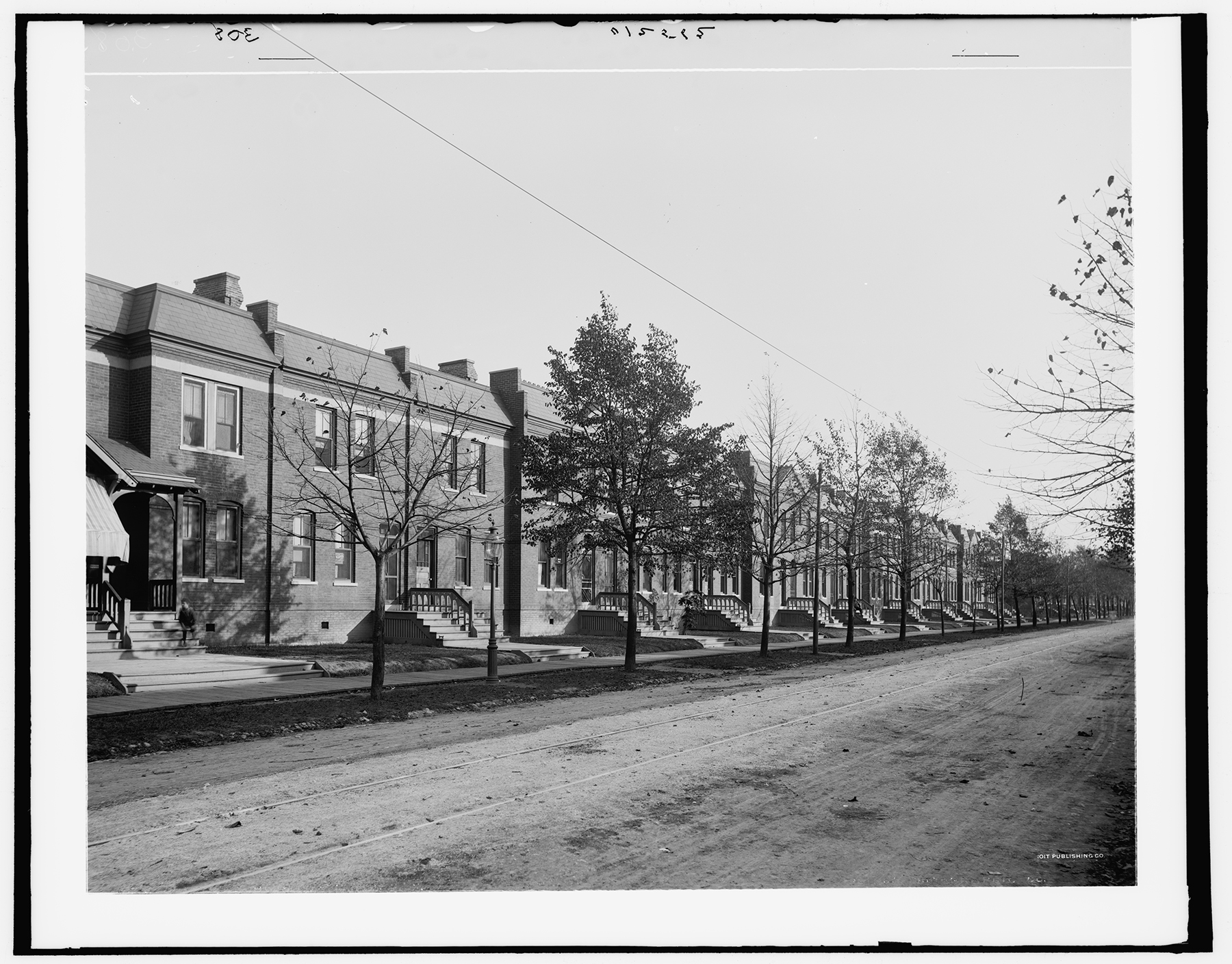
He assembled an accomplished team to bring his vision to fruition: architect Solon S. Beman, landscape architect Nathan Barrett, and civil engineer Benezette Williams. According to the NPS, the Pullman community included some 1,300 structures, ranging from housing to shopping areas and including a church, theater, hotel, sports complex, and parks for his factory employees. Many of the public buildings have been lost, but the residential buildings have been well preserved.
The centerpiece of the complex was the Administration Building with its elegant clock tower, an artificial lake known as Lake Vista, and the ornate Hotel Florence. (The clock tower building is the centerpiece of the site’s current revitalization work.)
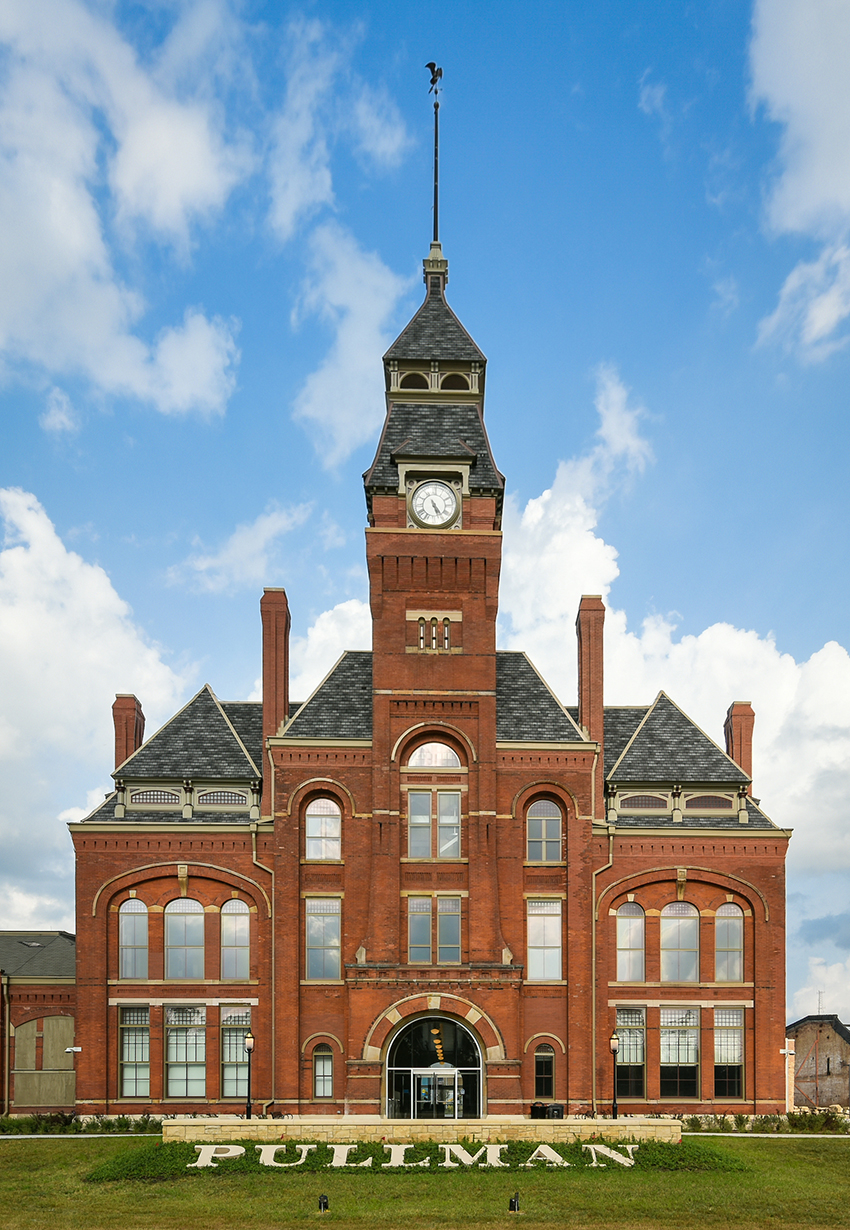
Pullman and his team implemented many innovations for the living quarters of his workers, including gravity-fed indoor plumbing and a central heating plant. “Pullman had this idea that if people felt good about where they lived, they’d be more productive workers,” says David Doig, president of the Chicago Neighborhood Initiatives, a nonprofit developer that has spent nearly 15 years redeveloping and advocating for the Pullman community.
But Pullman chiefly saw the community as a good business investment. A Historic American Engineering Record report on the site quotes the train builder himself declaring that the Pullman plan was “simplicity itself. We are landlords and employers. That is all there is of it.”
Pullman was significant to American history in several ways. For one, the factory pioneered a proto-assembly line system: train chassis were pushed along a north-south moving train table and then pushed east-west into bays where workers would assemble specific components (roofs, upholstery, etc.). No less a figure than Henry Ford came to inspect Pullman — years before he set up his own assembly line in Dearborn, Michigan.
Pullman also unwittingly sparked the American labor movement. After an economic downturn in 1894, Pullman slashed wages but did not reduce the rents he collected out of his workers’ paychecks. According to the NPS, workers eventually launched a strike, which shut down “much of the nation's freight and passenger traffic west of Detroit” and led to a suspension of federal mail. Violent clashes between strikers and federal troops occurred that summer, resulting in 34 deaths but also leading to the establishment of Labor Day as a federal holiday in honor of U.S. workers.
Finally, Pullman was also a notable site for Black history. Pullman hired and recruited many African Americans from the South to serve as porters for passengers traveling on his company’s sleeping cars. Pullman eventually became the largest employer of African American men in the country. The porters carried information and ideas across the country, and their influence helped fuel what is known as the Great Migration in the early and mid-20th century during which millions of African Americans relocated north to Chicago and other urban areas from the South. When Black Pullman porters unionized in 1925, they became the nation’s first African American labor union — and the work became a pathway to the middle class for many Black families and through which many civil rights gains were made.
After Pullman died in 1897, rail cars continued to be produced at Pullman during the following decades, but as rail’s popularity gradually ceded to the automobile, the business slowed. The last rail car rolled off the assembly line in the early 1960s.
By then there was talk of demolishing the factory site for an airport or industrial park, but community activists rose up to resist this destruction, forming the Historic Pullman Foundation and lobbying for decades for a concerted preservation effort. This was a tough ask, as during the 1970s, 1980s, and well into the 1990s, the surrounding neighborhood experienced disinvestment and depopulation.
In 1991, the state of Illinois purchased the Administration Clock Tower Building and the Hotel Florence for development as a state historic site. A 1998 fire destroyed much of the clock tower structure but drew additional interest in preserving the site.
According to Doig, the area has started to rebound. In the last few years, CNI and partner Ryan Cos., with the leadership of 9th Ward Alderman Anthony A. Beale, developed new distribution facilities for Whole Foods and Amazon, a national retail-based shopping center, two new commercial greenhouses for Gotham Greens, and a manufacturing plant and separate 400,000 sq ft warehouse for Method Products and its parent company SC Johnson. Attracting these businesses to Pullman has catalyzed additional development and community amenities. Nearly 2,000 jobs have been created, crime and unemployment are down, property values are increasing, and for the first time in 50 years, people are moving in.
Eventually the NPS acquired the Administration Building, and the site was designated a National Historic Monument by President Barack Obama in February 2015.
“This didn’t happen overnight,” says Richard Wilson, AIA, AICP, the city design director at Chicago-based Adrian Smith + Gordon Gill Architecture. “This has been an effort for 50 years. That’s why we’re so excited we got it to where it is today.”
Planning for the future
But then advocates and supporters of the site had to ask, “Now what?” The Pullman community and the NPS approached American Institute of Architects Chicago shortly after the 2015 designation and asked if the organization could mobilize Chicago’s planning, engineering, and design community to plot the future of the site. Wilson was tasked with leading that effort, which consisted of more than 60 volunteer architects, engineers, economists, and transportation offices.
An all-Chicago team was eventually selected to bring Pullman back to life.
Bauer Latoza Studio led historic preservation architecture for renovation of the clock tower building, Smith + Gill led the factory site design, and Rosemont, Illinois-based firm SPACECO Inc. led civil engineering, site surveying, and site construction management. These firms were aided by Lake Forest, Illinois-based environmental engineering firm DAI Environmental, landscape architecture firm site design group, and others.
Initial funding from the NPS and the National Park Foundation was about $10 million — but the project was in danger of blowing the entire budget just excavating contaminated dirt off the site.
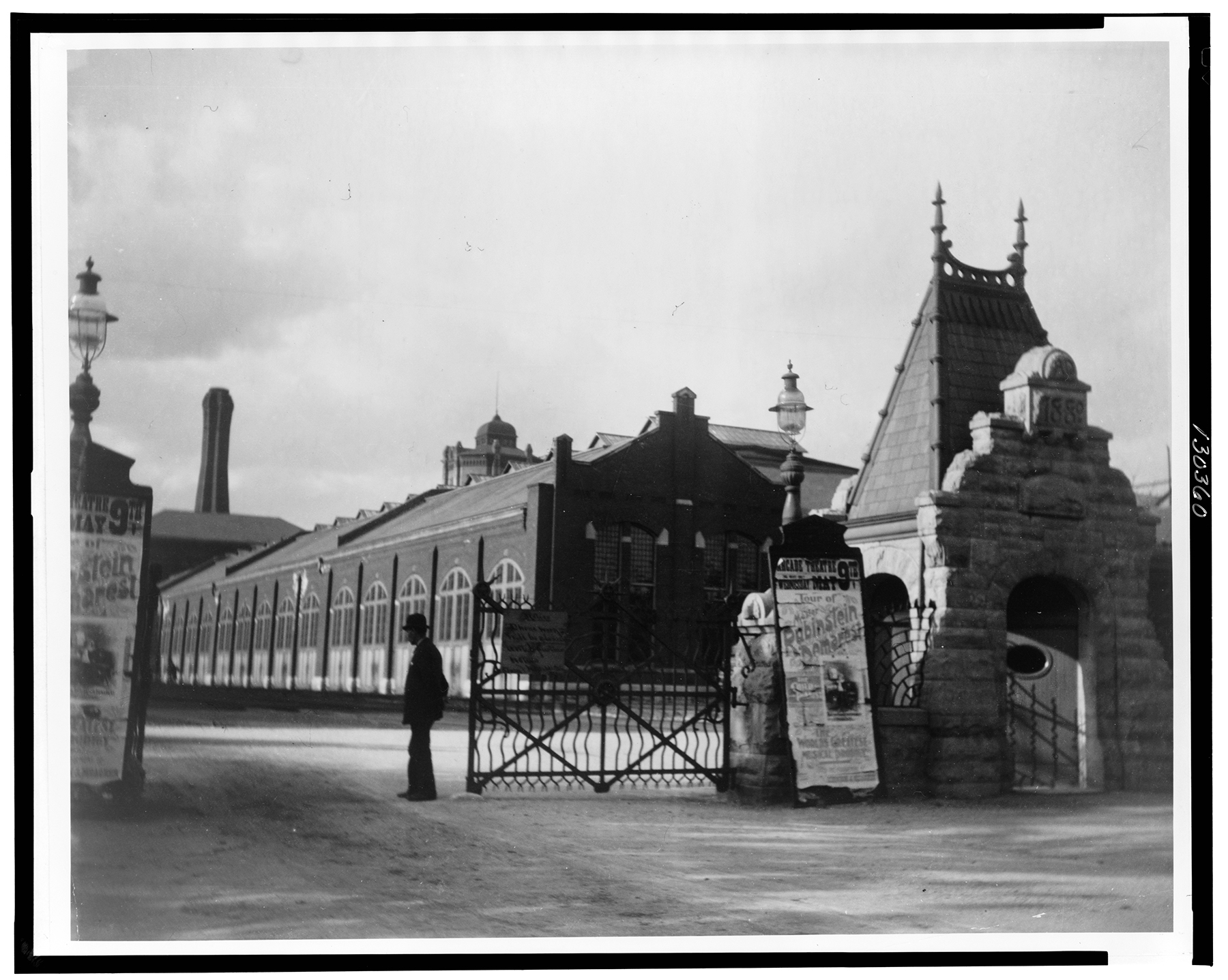
No wonder, given the complexity of the site. According to Richard J. Vamos, Ph.D., P.E., vice president of DAI, remediation work completed included the removal of an old diesel fuel underground storage tank, excavation and off-site disposal of contaminated soil from a number of isolated areas, off-site disposal of excess soil that needed to be removed for purposes of construction, and placement of engineered barriers over areas of residual subsurface contamination.
Vamos continues, “The engineered barriers consisted of different designs, depending on the location, (and included, for example) clean soil caps with a geotextile liner beneath in landscaped areas or hardscape surfaces such as concrete or asphalt pavement for driveways, walkways, parking areas, etc. In total, approximately 25,000 tons of soil was removed from the site.”
Ultimately, the Illinois Department of Natural Resources, which owns the 12-acre factory site, stepped in with more funding so a more substantial renovation could get underway, including full environmental remediation; restoring the landscaping to the postcard Pullman-era look; restoring the Workers’ Gate, the monumental structure that served as a gathering place and marked the division between Pullman the factory and Pullman the town; and creating an immersive interpretative experience inside and outside the Administration Building.
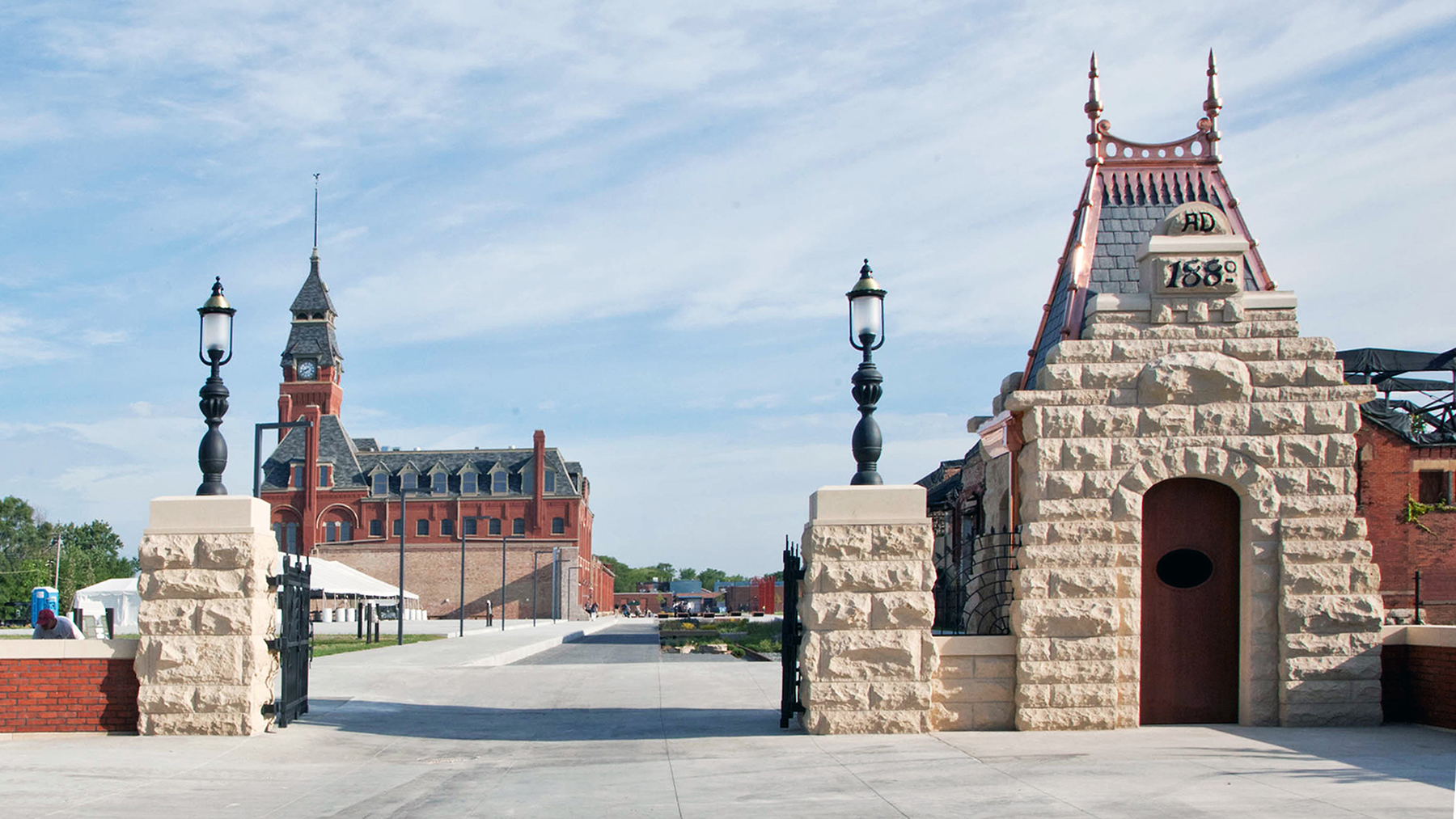
“It’s a very cool and important site in a long-neglected, blighted area,” says Andrea Terry, LEED AP, a principal with Bauer Latoza. The site itself was in poor shape. “It was a disaster,” she says. “It was heartbreakingly sad.” The 1998 fire had destroyed most of the architecture on the site, and it was overgrown with 30 ft weed trees, choked with garbage, and cut off from the redeveloping neighborhood with a chain link fence. “It was difficult to even envision how to get from the sidewalk to the Administration Building,” Terry says.
Terry’s firm had its work cut out. For one, there were no architectural plans. A handful of photographs of the exterior existed, but none of the interior. The team knew that the center of the building had been designed as a carriageway with openings in front and back. It had to enclose the renovation, so the firm designed the entranceway with a heavily glazed curtain wall with minimal framing so you could still see through the building. The team also installed a new floor and replaced the roof. The upper floors are unoccupied, although the design included an elevator shaft, allowing for a future elevator if funds become available.
Behind the building, rail cars used to be assembled along a transfer pit that sat in a narrow, 75 ft wide channel between the Administration Building (and its flanking north-south factory wings) and the rear erecting buildings. In reinterpreting that space, Smith + Gill and team created a section where the rail lines were reconstructed and surrounded with permeable pavers and plantings for stormwater infiltration, along with “ghost frames” that recalled the factory doors of the destroyed rear erecting shops building.
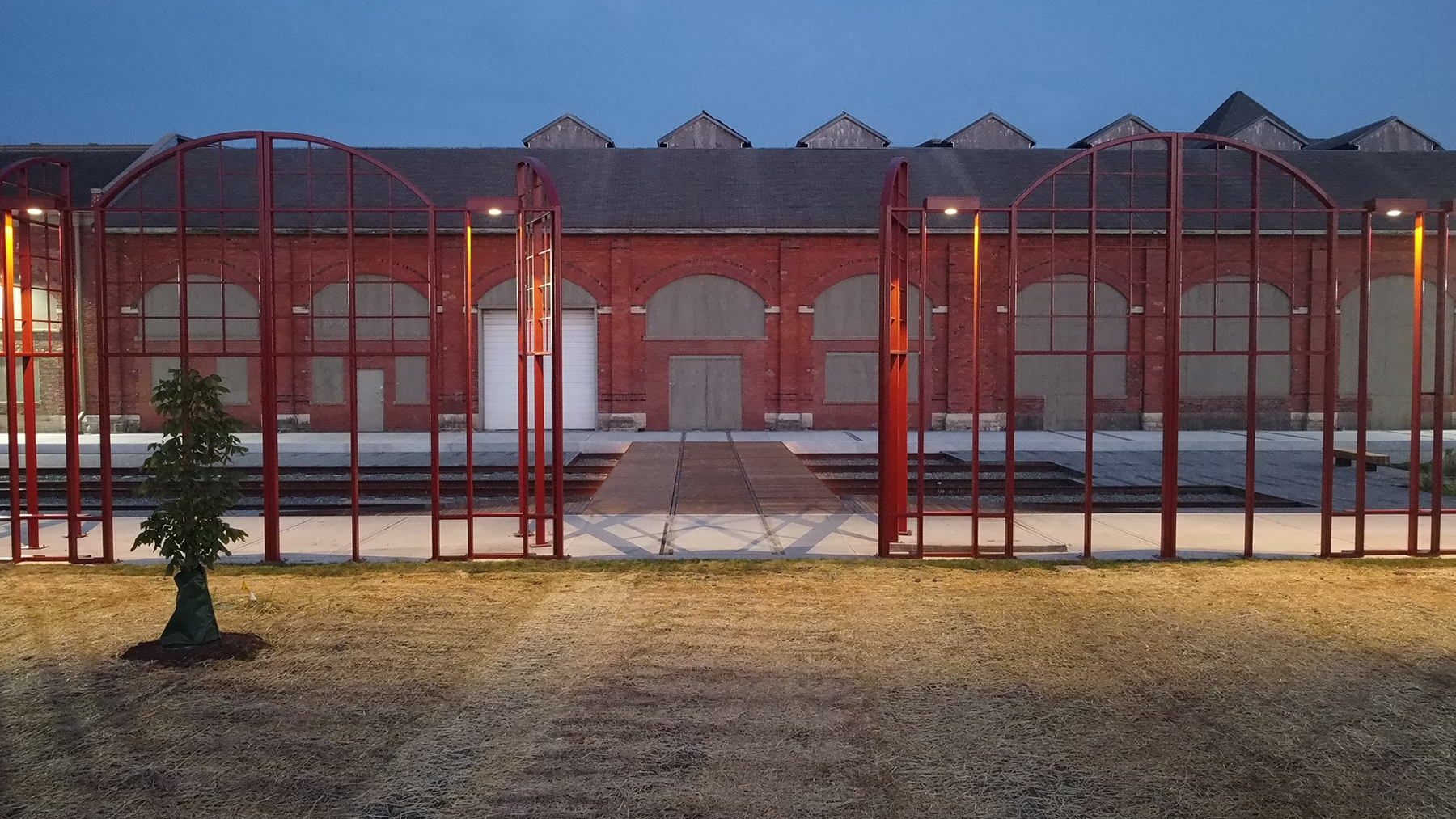
"Design of the transfer pit is an interpretive feature that helps tell the story of how the factory used to work," says Wilson. It includes one section that is re-created with replaced rail, gravel, and a transfer table to reflect the industrial operations from George Pullman's day, while other sections are more parklike and reflect the archeological condition of the site and its prairie landscape.
"The transfer pit is a unique public space for Chicago and a place to both teach and learn about Pullman," says Wilson.
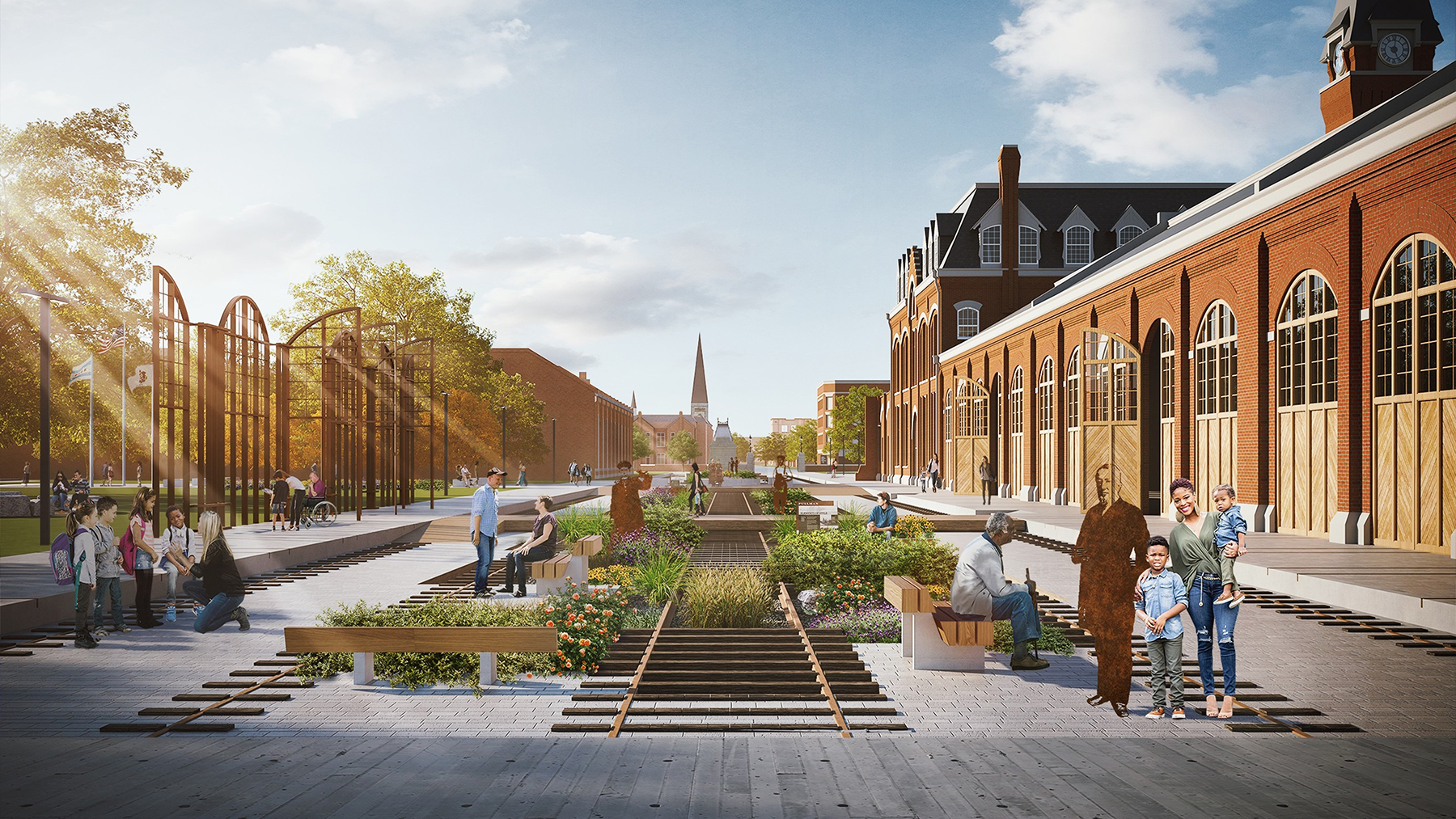
The gate and the lake
At the southern edge of the site, SPACECO excavated the original foundations of the Workers’ Gate. In projects like this, historic foundations would usually be photographed and measured, then removed. But the Illinois State Historic Preservation Office felt that because so much of the fabric of the Pullman buildings had been lost, the original foundations of the gate should remain. Bauer Latoza designed a pad to be placed atop the original foundation so the team could build a multiton new structure while leaving the original foundation in situ.
In front of the Administration Building was Lake Vista, which Pullman designed as the finishing visual touch to promote the company. But it also served a practical purpose — the factory’s Corliss steam engine pulled heat exchange water from the lake to cool and power the engines. Eventually, the lake was filled, and Cottage Grove Avenue was built through the lake’s original footprint.
“No one wanted to re-create a pond on the site,” says Michael Mondus, P.E., CFM, a principal with SPACECO. “Plus the soil conditions were such that having a pond would have been pretty difficult because the soils were very permeable.”
So Smith + Gill, site design group, and SPACECO led efforts to realize a new design vision: to scoop out the land in front of the Administration Building to evoke the contours of the original lake, enabling the land to function as a stormwater retention zone.
Finally, the team installed new landscaping based upon the original 1880-era plant palette and a meandering sidewalk path to the front entrance of the Administration Building — all meant to evoke the pastoral character of George Pullman’s original design.
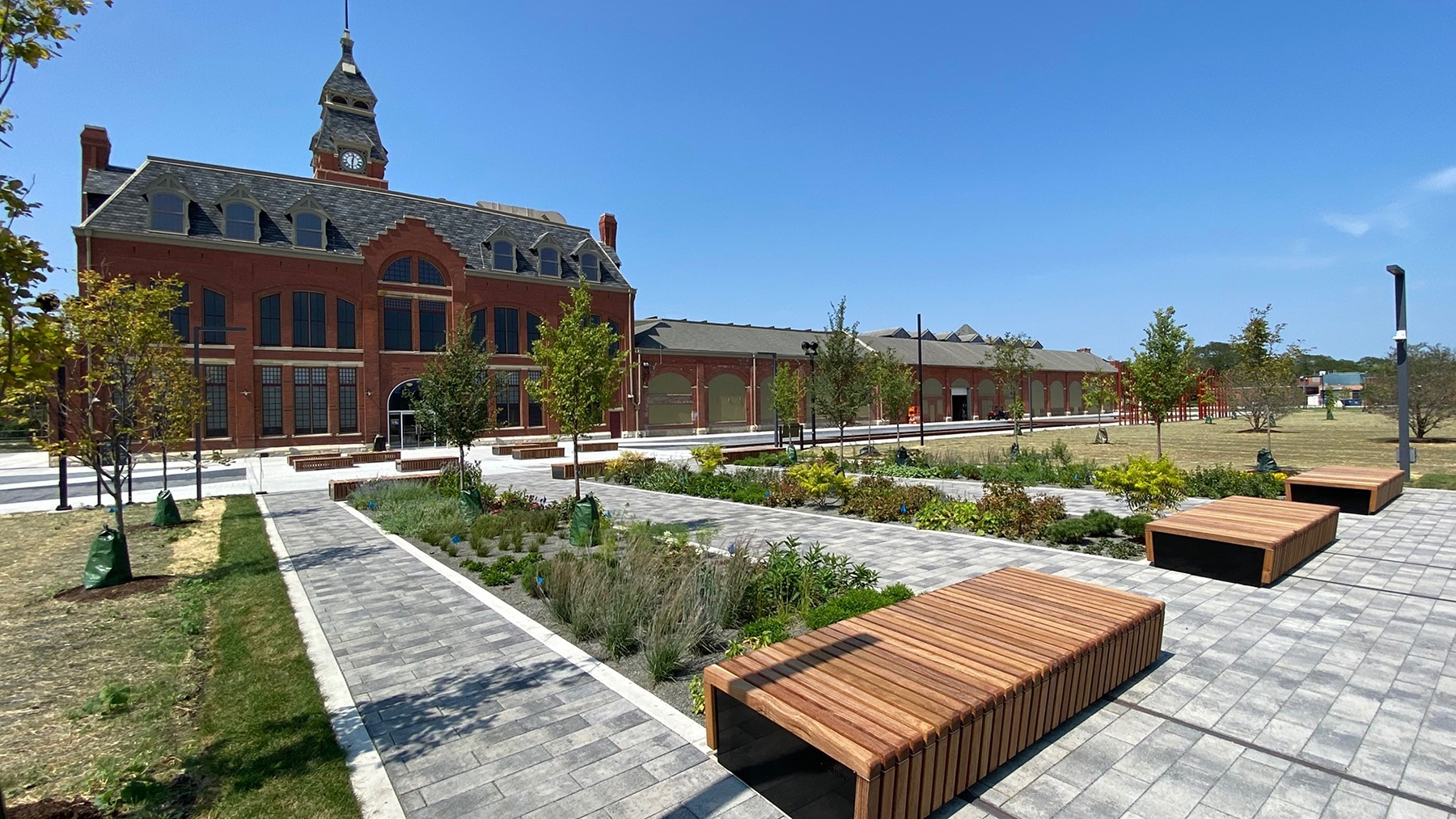
What’s next?
Work began on the $35 million project in late 2019 and wrapped up, fittingly, on Labor Day last year. Despite the opening of the site, there’s plenty of work to be done. Planners are looking at three more projects: transforming the north factory wing space into an event space and exhibit space for historic Pullman cars (there’s not a single Pullman rail car at Pullman), rehabbing the remaining rear erecting shop into a makers’ space for local artisans such as welders and steelworkers, and renovating the Hotel Florence for public access.
“Architecturally it was so awesome to work on, and the site can now illustrate its role in history,” says Terry. “I hope everyone on the planet goes to visit it.”



